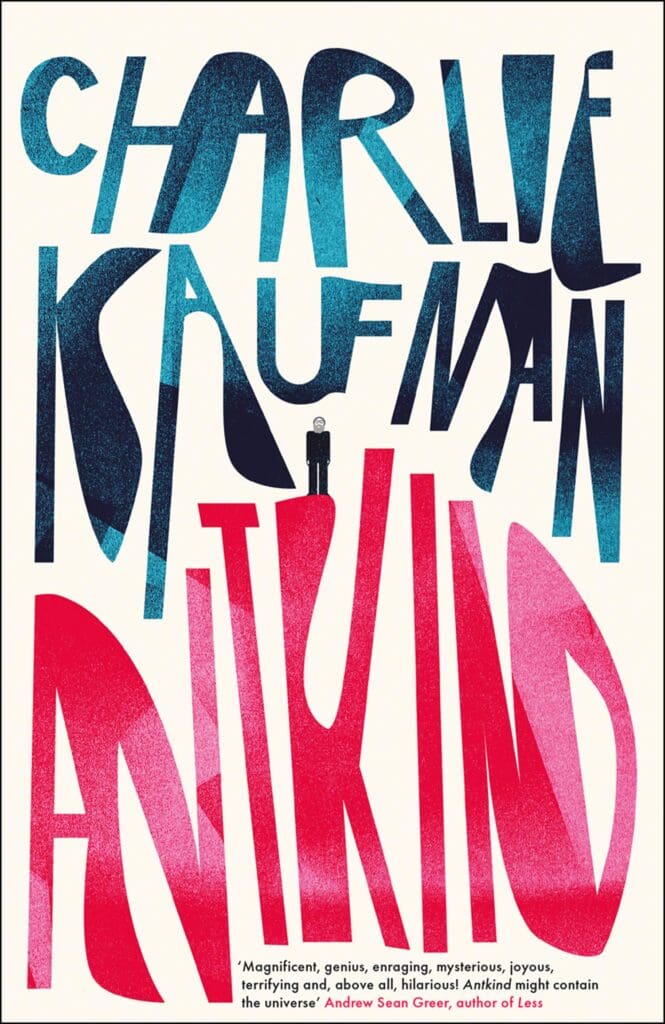
Colton Alstatt, Intern: I was lucky enough to write a review for the ZYZZYVA blog on my favorite novel of the year, Charlie Kaufman’s Antkind. Few days pass where I do not think about some wild scene, iconoclastic insight, or odd character from the book. It is a long read but, if you are fortunate enough to have some time off work this holiday season, a worthwhile one.
The School of Life YouTube channel was notable for me, too. It produced animated video essays on art history, self-improvement, and relationship psychology with subversive insights that I have not heard anywhere else. Videos like “The Capacity to Give up on People,” for example, struck me as profound in an empathetic, literary sort of way.
My album of the year is Protomartyr’s Ultimate Success Today. Its topical exploration of authority in America—done using frontman Joe Casey’s imaginative lyricism and a post-punk sound that is somehow both tight and expansive, with each track laying memorable guitar riffs atop ambitious woodwinds—made it feel like an album that could only be (and fortunately was) released in 2020.
Similarly, the Borat sequel was one of the few shocking things this year’s America could still produce, precisely because it fails to be shocking. The main character’s vileness is no longer needed to goad strangers, who will, with minimal prompting, compose entire folk songs about corrupt government scientists.
What stood out to me was not Sacha Baron Cohen’s exaggerated Kazakh or his daughter, but these non-actors, whose realness feels too sharp to exist comfortably within a comedy. It is discomforting how well the movie’s real people fit my expectations of contemporary American characters, which includes: the Holocaust survivor weathered from battling reemergent anti-Semitism; the babysitter combatting internalized misogyny instilled in a teenage girl by an Instagram influencer; and the powerful presidential lawyer, whose appalling scene, despite everything, is not surprising. After watching Borat Subsequent Moviefilm, the viewer must consider how they have normalized an America that not even Borat could out-absurd. An exhausting ordeal, but one I recommend.
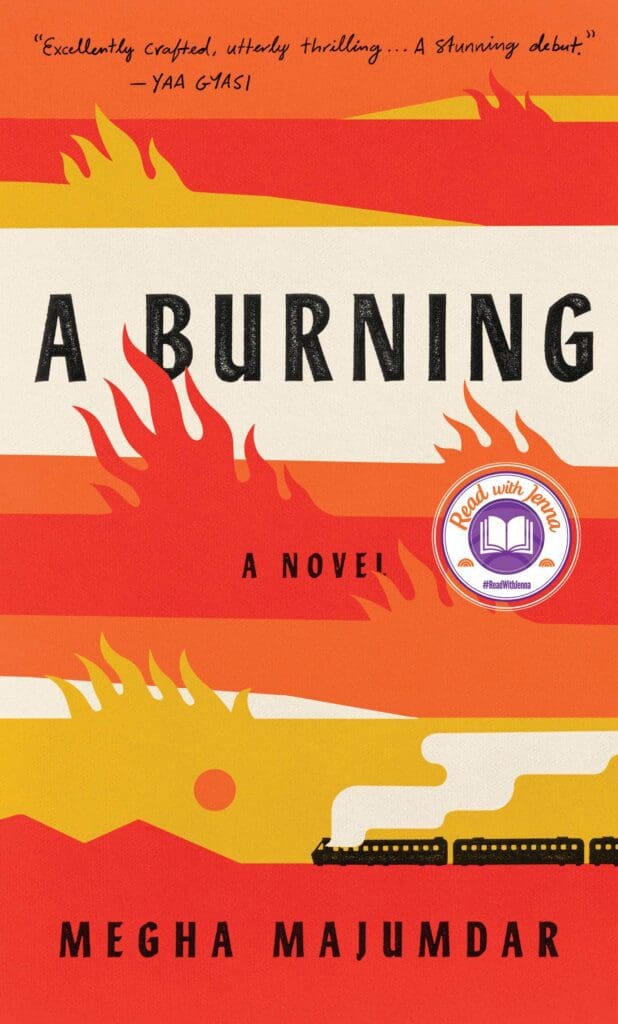
Cade Johnson, Intern: Movie: Mirdana July’s Kajillionaire is a very bizarre, unpredictable film with heart about a young woman who is raised by her parents to provide a living for them by swindling. Evan Rachel Wood and Gina Rodriguez’s performances are exceptional. Earthquakes also play a big role in the film, and I’m fascinated by earthquakes, so that was a treat.
Television: Michaela Coel’s I May Destroy You is far and away one of the best television shows I have ever seen. It follows Arabella, played by Coel, a writer facing the aftermath and inner turmoil of being sexually assaulted at a nightclub. It’s a potent, engaging, and expertly crafted story rife with thoughtful meditations on gender, race, queerness, and technology.
Music: So much good stuff has already been written about Fiona Apple’s latest album Fetch the Bolt Cutters, from how it’s the perfect “quarantine” album, to Apple’s exceptional lyrical talents and its unique, organic instrumentation. It was also the first album in 10 years to receive a Pitchfork perfect 10 score, and although I try not to pay any mind to their numerical scores, I’m glad I can rest knowing they got this one right.
Book: I feel like a broken record talking about how much I loved Burning by Megha Majumdar. It’s a unique, enthralling story about a young Muslim woman named Jivan living in a slum in Kolkota, India, who is falsely associated with a terror attack. I recommend it to anyone looking for a new book to read. Majumdar’s breezy but complex, dark but sympathetic novel is at the top of my list for books I enjoyed most this year.

Corinne Leong, Intern: Best Show—The Queen’s Gambit. Apologies for echoing every other “Best Shows of 2020” you’ll read this month, but The Queen’s Gambit has everything one could want from a bingeable miniseries: appropriately-paced drama, a character-driven plot, a killer soundtrack, unobtrusive but moving romance, and the best 60s-era costume design Netflix has to offer. Multiple news outlets have reported that sales in chess paraphernalia have surged since The Queen’s Gambit first aired in October, and it’s easy to understand why. The show, anchored by Anya Taylor-Joy’s stunning performance as orphaned chess prodigy Beth Harmon, makes chess a life-or-death affair.
Best Album—Punisher by Phoebe Bridgers. Stranger in the Alps was a tough act to follow, but Phoebe Bridgers’ sophomore album Punisher may actually surpass it, marrying confessional lyrics with a sense of apocalyptic urgency (and a lot of horns and brass). Punisher was released mid-June, around the time when pandemic ennui began to swing at full force—and it was (and continues to be) the perfect album for isolation-induced catharsis.
Best Movie—I’m Thinking of Ending Things. I can’t claim to have understood every single moment of I’m Thinking of Ending Things, but I think that’s probably for the better. Based on the 2016 novel by Iain Reid, I’m Thinking of Ending Things, like many of writer and director Charlie Kaufman’s other films, is the kind of work one must sit with and process: partly because, hey, what on earth did I just watch, but also because it offers powerful meditations on mortality, memory, and the passage of time. The film is by no means perfect (it occasionally drags and becomes excessively cerebral), but for me, it was absolutely this year’s standout—a must watch for its stunning visuals and powerful messages about fantasy, lost potential, and media’s ability to eclipse reality.
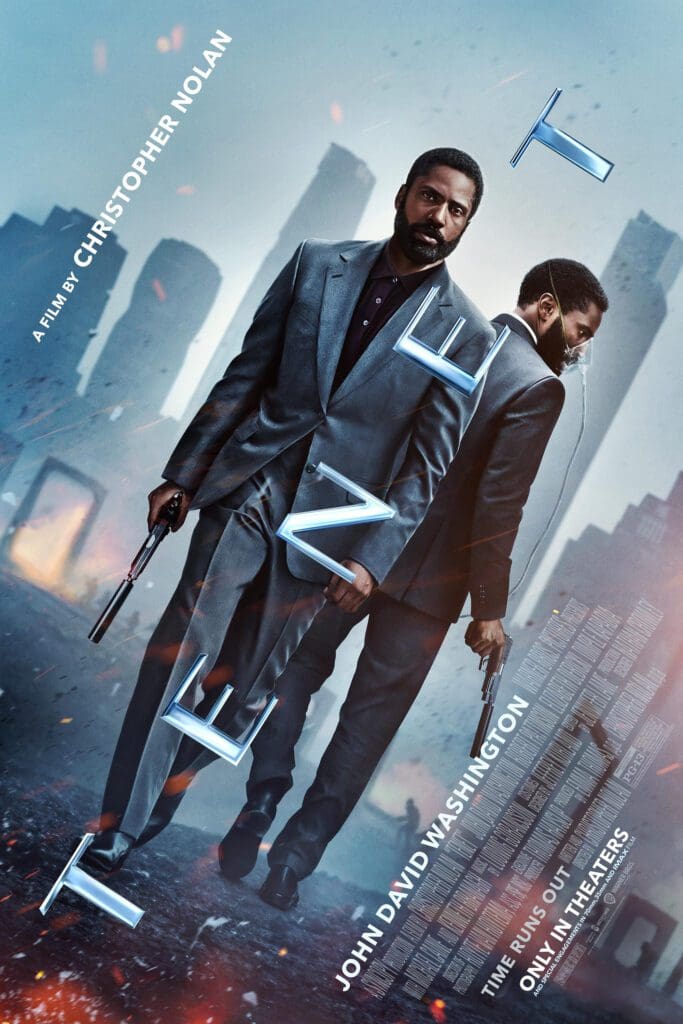
Nessa Ordukhani, Intern: There wasn’t much to look forward to this year. However, one shining moment in 2020 was the highly anticipated release of Christopher Nolan’s new film Tenet. With his signature mine-bending flair, Nolan, the director of films like Inception, Interstellar, and Dunkirk, delivers a gripping thriller about a secret agent trying to prevent World War III.
Given the current circumstances, going to see Tenet in theaters was not really an option, but neither was waiting another year for the film to come out on streaming platforms. So, with pillows and snacks in tow, I went to a drive-in theater. Compared to a typical cinema, the drive-in possesses a lot of distraction, what with cars honking and flashing their lights. Even still, as an ardent Christopher Nolan fan, I anticipated a confusing movie, so it was important to muster all of my concentration when watching.
Sure enough, intense focus paid off. Like most of Nolan’s films, Tenet is perplexing and mind-boggling. Its entertainment doesn’t come from the fact that it is fun to watch, but rather from the fact that it is extremely stimulating and engaging. Centered on a nameless protagonist portrayed by John David Washington, the film is ultimately about mysterious “inverted” objects that have been sent backward through time by the future to wage war on the present. Throughout the film, there are bullets being drawn backward into guns and demolished cars returning to perfect condition. Not only is the film visually exciting, but it is incredibly thought-provoking and makes you feel either ten times smarter or ten times dumber after you watch it (depending on how closely you pay attention). Either way it will make you question everything you know about time.
Tenet is a film that builds up tension and suspense in a way that allows the audience to slowly piece together the mystery of what exactly is going on, and proves nothing short of exhilarating. If you want to watch a movie that will have you thinking about it for weeks later and will leave you looking up explanations and theories about time, then Tenet is the 2020 film for you.

Zack Ravas, Editorial Assistant: 2020 has been a dire year for film exhibition in America, with the pandemic forcing many if not most movie theaters to shutter their doors for months at a time. It meant that I had to get used to watching at home the kind of movies I would have preferred to see on the big screen, including Autumn de Wilde’s delightful, pastel-colored update on Jane Austen’s Emma.; Christopher Nolan’s latest exercise in mind-bending action setpieces and equally mind-bending exposition, Tenet; or even Eliza Hittman’s raw, intimate indie drama Never Rarely Sometimes Always. And yet I found that far and away my favorite films of 2020 turned out to be documentaries—perhaps because their more modest ambitions mean they lose less in the transition to one’s television, perhaps because the unavoidable reality of the pandemic had me subconsciously craving true-to-life stories about individuals facing down uncertainty.
Case in point: Bradford Thomason and Brett Whitcomb’s Jasper Mall, a documentary following the staff and patrons of a mall in steady decline near Birmingham, Alabama. Originally opened in 1981, Jasper Mall has been hit especially hard by the last decade of economic woes: since 2016, the mall has lost its two big ‘anchor stores,’ Kmart and JC Penny, and we see many more tenants leave over the course of the 84 minute documentary.
Considering the popularity of ‘Dead Mall’ videos on YouTube in recent years, I was concerned Jasper Mall was going to indulge in cringe humor and schadenfreude, making fun of the mall’s denizens to a soundtrack of vaporwave-style elevator music. Nothing could be farther from the truth: while the filmmakers favor an unobtrusive, fly-on-the-wall style, it’s clear they possess a great deal of empathy for those who work and shop at Jasper Mall. There’s Mike McClelland, former zookeeper and now the maintenance man (and security guard and just about everything else) for the mall; an elderly married duo on the verge of retiring after running their flower shop for decades; two teenagers who frequent the mall and speak candidly about the challenges they’ve faced as an interracial couple; and numerous others.
There are moments of Jasper Mall that feel almost unbearably sad, whether it’s Mike McClelland’s constantly trying and failing to secure another flagship store, or a salon employee and her friend discussing the modest hopes and ambitions for their lives while on a smoke break. And yet there are the scenes that uplift as well: the camaraderie shared by a group of senior citizens who play dominoes together at the mall, and the genuine care a teenage girl displays for her boyfriend even after they’ve broken up. The film is no doubt rough around the edges, lacking the animated sequences and well-lit interviews you’ll find in your average HBO doc, but in that way proves a documentary can succeed on its own merits if its subject is compelling enough. Although I desperately missed the theatrical experience this year, and look forward to returning to the Alamo Drafthouse someday, it was hardly a disappointment to find that the quietest stories spoke the loudest in 2020.

Laura Howard, Sales & Marketing: It’s been a hard year (ya think?). Here are some things which have lightened my at-home existence lately:
—That guy who won 100K on The Price is Right last week. I mean, how inspiring! He literally got down on his knees thanking Santa-bearded host Drew Carey. With that kind-of cash win, I mean, who wouldn’t?
—Tayshia Adams got engaged to Zachery Clark on The Bachelor. Love rules, no?
—Speaking of love, I virtually attended The Mother Hip’s Annual Holiday Show at Great American Music Hall last weekend. This year’s annual tradition was experienced via my computer in my own living room. It’s not Christmas without SF holiday shows: Brian Setzer Orchestra, X, Phish, Dead and Co, jazz at the Masonic, the Mother Hips Holiday Show at Great American Music Hall (even if we had to leave at set break last year—that’s another story!). Supporting artists and aiding our vital institutions in this city is so urgent, we need more of this as well as ways to foster these events. It was beautiful, with the ‘virtual love’ deeply felt, and the band didn’t disappoint. Wonderful to hear favorite tunes and dream for times to come.
—Love Actually. No, really, Love Actually! My Christmas tradition is somehow beginning to feel more and more awkward. I mean, what’s up with the guy whose brother is having his sex with his wife who then goes off and finds a new wife within 5 weeks. I mean, are they even divorced yet? And what’s up with the best-friend-guy-of-the-guy who has no idea his bestie has it hard for his wife. I mean, what? Or the father who is banging his secretary or something but then he goes off on a vacation (?) and then returns and suddenly everything is okay now? Right? In 5 weeks. I forget what else I had to say about it, but, I’m sure it was a lot about all the positives in the movie too: Huge Grant, “Jump (For My Love”), or that hot guy Laura Linney gets to make out with. But wait—reeling it back, I want to end this on a positive note with the movie’s intro, which seems to sum things up:
“Whenever I get gloomy with the state of the world, I think about the arrivals gate at Heathrow airport. General opinion is starting to make out that we live in a world of hatred and greed, but I don’t see that. Seems to me that love is everywhere, often it’s not particularly dignified or newsworthy, but’s always there. Fathers and sons, mothers and daughters, husbands and wives, boyfriends, girlfriends, old friends. When the planes hit the twin towers, as far as I know none of the phone calls from the people onboard were messages of hate or revenge, they were all messages of love. If you look for it, I’ve got a sneaky feeling you’ll find that love actually is all around.”
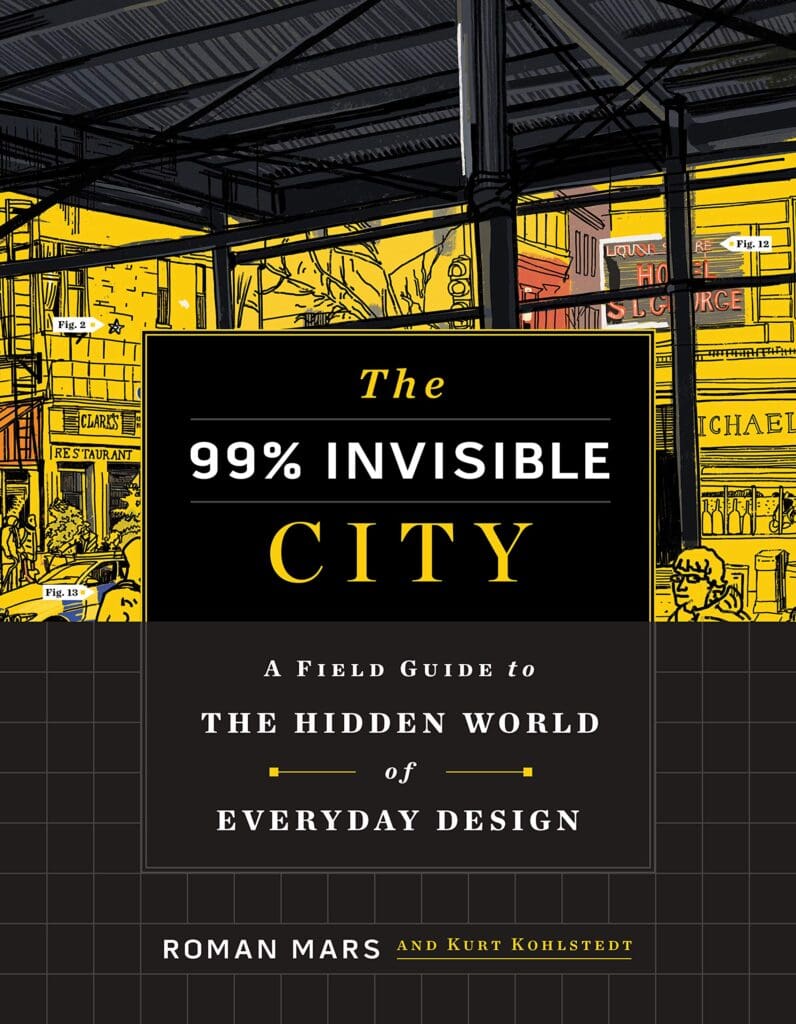
Josh Korwin, Designer: 2020 got me yearning hard for bygone days. Luckily, nostalgia was in ample supply this year.
Album: The Postal Service, Everything Will Change. The Postal Service’s sole album, Give Up, was released in early 2003, about midway through my college days, and was on very heavy rotation for me back in the very early days of iTunes. That album saw a deluxe reissue in 2013. Everything Will Change, recorded during the 2013 reissue tour, covers most of the catalog. I’m not often crazy about live albums, as they rarely end up rivaling their studio counterparts. But in this case—and I might chalk this up to how much I miss live music, live anything for that matter—the energy of the crowd is palpable, and adds to the experience. I splurged on the 24-bit audiophile digital copy and spent an unforgettable early morning listening on headphones with all the feels. (Honorable mention: The Garden (Special Edition) by Zero 7, for very similar reasons)
Podcast: I, Podius, hosted by John Hodgman and Elliot Kalan, and produced by Jordan Kauwling, was just what I needed back when it debuted in February of this year (eons ago). Alyssa and I were homebound like many others, but our early pandemic experience saw us spend April through July transforming our home into a mask factory. As we churned through the nonstop manufacturing of thousands of cloth face masks, we alternated between watching episodes of I, Claudius (1976) and listening to the humorous, poignant, and soothingly erudite companion commentary from Hodgman, Kalan, and Kauwling (with cameos from her mom). Unlike Hodgman, who had seen the BBC series many times over, we had not, and I don’t know if we ever would have otherwise. While vicariously osmosing Hodgman’s own nostalgia, we found the podcast underscored the television drama’s brilliance, relevance, and quaint, theatrical charm. (Honorable mention: Staying In with Emily & Kumail, for very similar reasons; Wind of Change; and Chameleon)
Book: The 99% Invisible City: A Field Guide to the Hidden World of Everyday Design, by Roman Mars and Kurt Kohlstedt, is thematically based on the 99% Invisible podcast, furthering its goal of explaining the weirdness and fascinating origin stories of objects and built environments. Setting aside all the good things I would say about the content—which brings me back to the did-you-know? joy of the Eyewitness Books series I loved when I was a kid—the book is a gorgeous artifact. And to a designer of books, this is sometimes all that matters. I would expect nothing less of a Roman Mars project, but kudos to designer Raphael Geroni and illustrator Patrick Vale for making it happen.
TV: How to With John Wilson is like a living-in-New-York-City virtual reality simulator. I am not sure that I would even recommend it, per se—it is definitely not for everyone. It has perks and drawbacks. There are moments of bliss and beauty. There is a visual poetry to all of it; despite its disparate nature and lack of obvious organization, somehow it all meshes together. But for all its splendor, it can also be suddenly revolting, and intensely unpleasant, with disgusting things that appear without any real warning. All of this applies equally to the series as it does to the actual experience of living in New York. I have never seen a more accurate—though perhaps concentrated—depiction of how acutely bananas it is to live in the city (without having to smell any of it). (Honorable mention: Murder on Middle Beach, The Fungies, High Fidelity (the series), The Fresh Prince of Bel-Air reunion; Britain by Narrowboat; The Queen’s Gambit; and the Unsolved Mysteries reboot)
Movie: Class Action Park is not the first documentary to be made about the notorious amusement park, but it is the best. Growing up a Nickelodeon addict in New Jersey, I was bombarded with Action Park TV commercials on a daily basis. I never visited, but as a kid I fantasized about doing backflips off of the Tarzan Swing about as often as I dreamt of taking home a glowing piece of the awesome Aggro Crag. Alas, I was no real-life daredevil (Seaside Heights had a water park that was scary enough for me, thank you very much). Turns out all I needed to do was wait a few decades to get a behind-the-scenes look at just how much of a nightmare it truly was. Aside from its destruction of my childhood reveries, my only other complaint is that thanks to HBO-level exposure, practically everybody knows all about Action Park now, so I feel less special. (Honorable mention: There Are No Fakes; Secrets of the Saqqara Tomb; and Dick Johnson is Dead)
Game: Tony Hawk’s Pro Skater 1 + 2 is a “remastered” version of the original two games, both of which I played so many hours of in high school that “Superman” by Goldfinger feels like it was carved with a jackhammer into the canyons of my brain. Shaking loose twenty years of cobwebs, I found to my relief that balancing a nose manual with your thumbs is just like riding a bike. Having been a gamer for practically my entirely life (seriously, I was playing Tink! Tonk! Tink’s Adventure on a Commodore 64 when I was one or two years old), I have discovered something akin to an uncanny valley experience with revisiting old games with 3D graphics. Games made before the widespread use of 3D usually hold up fine; big, blocky pixels look even better with age on newer hardware. But like watching aging but groundbreaking-at-the-time CGI in films, it is often quite a shock to replay beloved games from the early 3D days and realize they look like mush. The developers of THPS 1 + 2 rescued all of us ’90s kids from this misfortune by making the games look and feel like our brains think they remember them. My one big gripe: they took most of the ridiculous fun out of the character creator.
Fonts: Ohno Fatface, care of the one and only James Edmonson, is a virtuoso extrapolation of the 19th-century fatface, filtered through the tight-but-not-touching, inflated leisure-Didones of late ’60s and early ’70s Photo-Lettering specimen books (RIP Ed Benguiat). The family is rich with attention to detail, astonishingly versatile, and a masterpiece of variable font technology. (Honorable mention: Nichrome by Mass Driver; and Service Gothic by Nick Sherman/HEX).
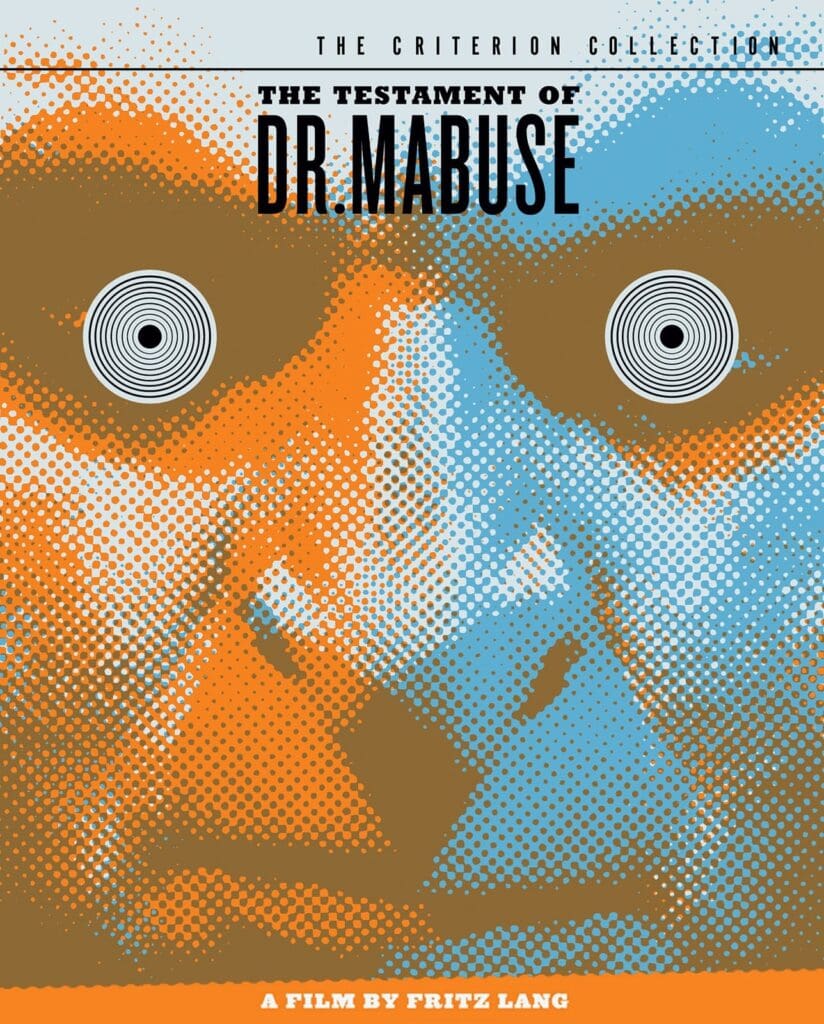
Oscar Villalon, Managing Editor: Sheltering at home doesn’t mean you have the free time you think. Anxiety and stress eat into your concentration, and the demands of family and work do not ebb. But there are more hours, simply because there is nowhere you have to be, and because you’re staying up till the early hours of morning, following the steady drip of bad news that in the main is 2020. It was in such a state of mind that I watched a movie I had long wanted to get to. The Testament of Dr. Mabuse is Fritz Lang’s unnerving 1933 sequel to his silent film Dr. Mabuse: The Gambler. The titular doctor, the embodiment of criminal evil, is now locked up in an insane asylum. But like a prison-gang leader, his reach remains long—in fact, much longer, stretching as it does into the phantasmagorical. A plot to bring society to its knees through acts of terror is discovered, and we meet the fanatics who would unhesitatingly give up their lives to see it through—and follow the police detectives trying to stop them. There’s a dreadful frisson in watching a film you know was first watched by those entering into life under fascist rule. (Joseph Goebbels would ban the movie.) I don’t think I would have felt as sharply Lang’s conjuring of imminent disaster if I had watched Mabuse years before. The experience of watching it this year remains fresh. Will the danger be truly neutralized? Will the madman foment ruin all the same? Where are the bombs being planted? How much time do we have? Nothing but questions.
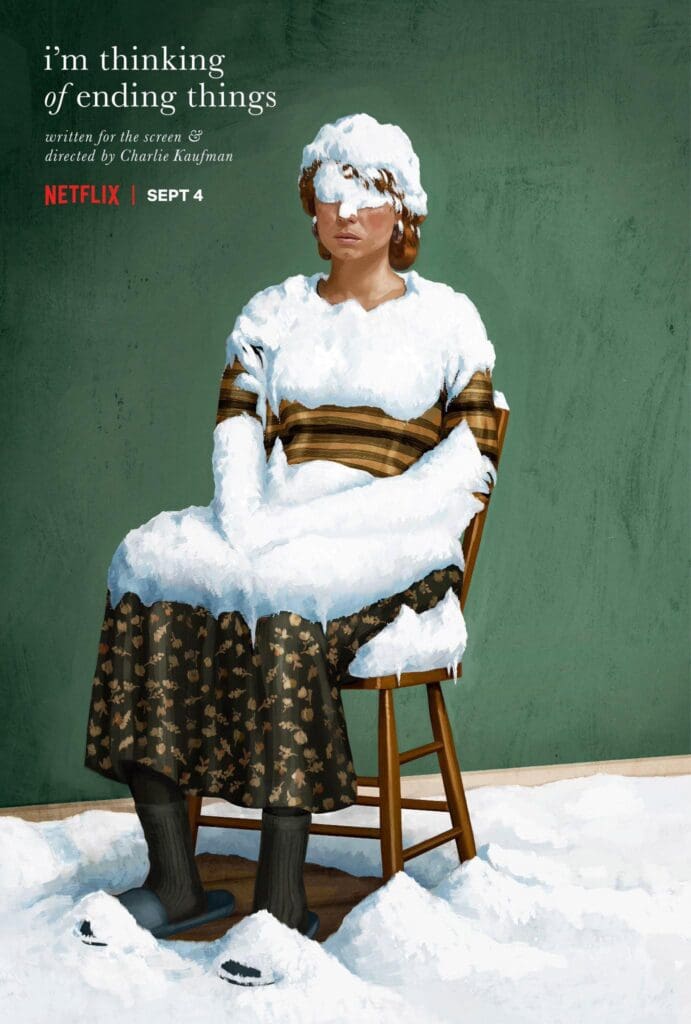
Laura Cogan, Editor: Over the past few months I’ve watched three docuseries about cults (two about NXIVM and one about Heaven’s Gate), a documentary about social media (The Social Dilemma), and I’m Thinking of Ending Things, Charlie Kaufman’s new film—which turned out to be my favorite movie I’ve watched this year. In the way that sometimes happens—and always thrills me when it does—these disparate viewing experiences all unexpectedly struck a chord with the ideas restlessly pacing in my mind.
In a year when widespread acceptance of baseline facts regarding our shared circumstances became an urgent matter of public safety, how alarming and profoundly unnerving it has been to see it demonstrated beyond all doubt that we have no such common ground. Like so many, I’ve spent much of the year thinking about how we got here. And lately I’ve been preoccupied with thoughts of how vulnerable our minds are; how influenced we are by the media we consume and the company we keep (online especially); how intelligence does not necessarily mitigate this vulnerability; and how that malleability is linked to the strengths of human intelligence (resilience, adaptation, creativity), but also to our most acute and dangerous weaknesses (confirmation bias, purchase in conspiracy theories, susceptibility to delusion). We rely on the mind to perceive the world and navigate our lives—but our minds are more fallible than we realize, and constantly subject to all manner of influence.
And while I feel confident in my perception of the basic scientific realities of the pandemic, it would be sheer arrogance for me or anyone else to come away from watching The Social Dilemma sanguine about the effects of social media on their own minds, or from Seduced: Inside the NXIVM Cult thinking it’s simple enough to say, “I would never fall for that”—because while that may (or may not) be true, the broader takeaway should be that we are all more susceptible than we realize.
Perhaps because of these preoccupying concerns, here’s what I saw in I’m Thinking of Ending Things: a mind (“Jake’s”) furiously at work spinning narratives of what his life might have been, borrowing liberally from everything he’s read and watched for material—only to have his inventions still, obstinately, elude his total narrative control. Taking my above concerns a step further, Kaufman’s movie seems to take an uneasy view not only of external influence, but of how capable we are of getting out of our own head. Poetry, music, criticism, painting, and theater all seem to hold a dual kind of power in Jake’s world: to exalt, yes, but also to be used as a kind of collage of influence, pasted together in place of his own imagination, own thoughts, own perceptions. In the end, Jake’s imagination is so limited he can only fantasize of being seen as he desires: innovative and celebrated. For what, he doesn’t know.
Are these recently viewed works authentically connected, or is my mind manufacturing synchronicity as I tread and retread a path of worried thoughts at the close of an anxious year? Hard to say, but I do feel compelled to think more about the nexus of storytelling and technology—and, in fact, we’re thinking about that quite a bit at the journal as we plan our 2021 issues. Stay tuned, as they say.
